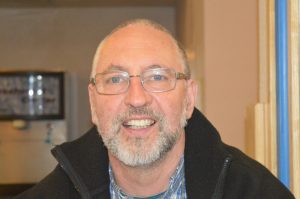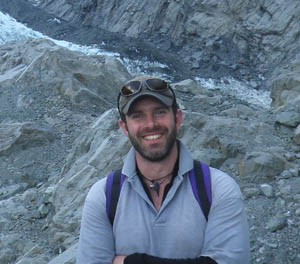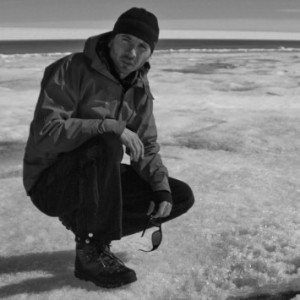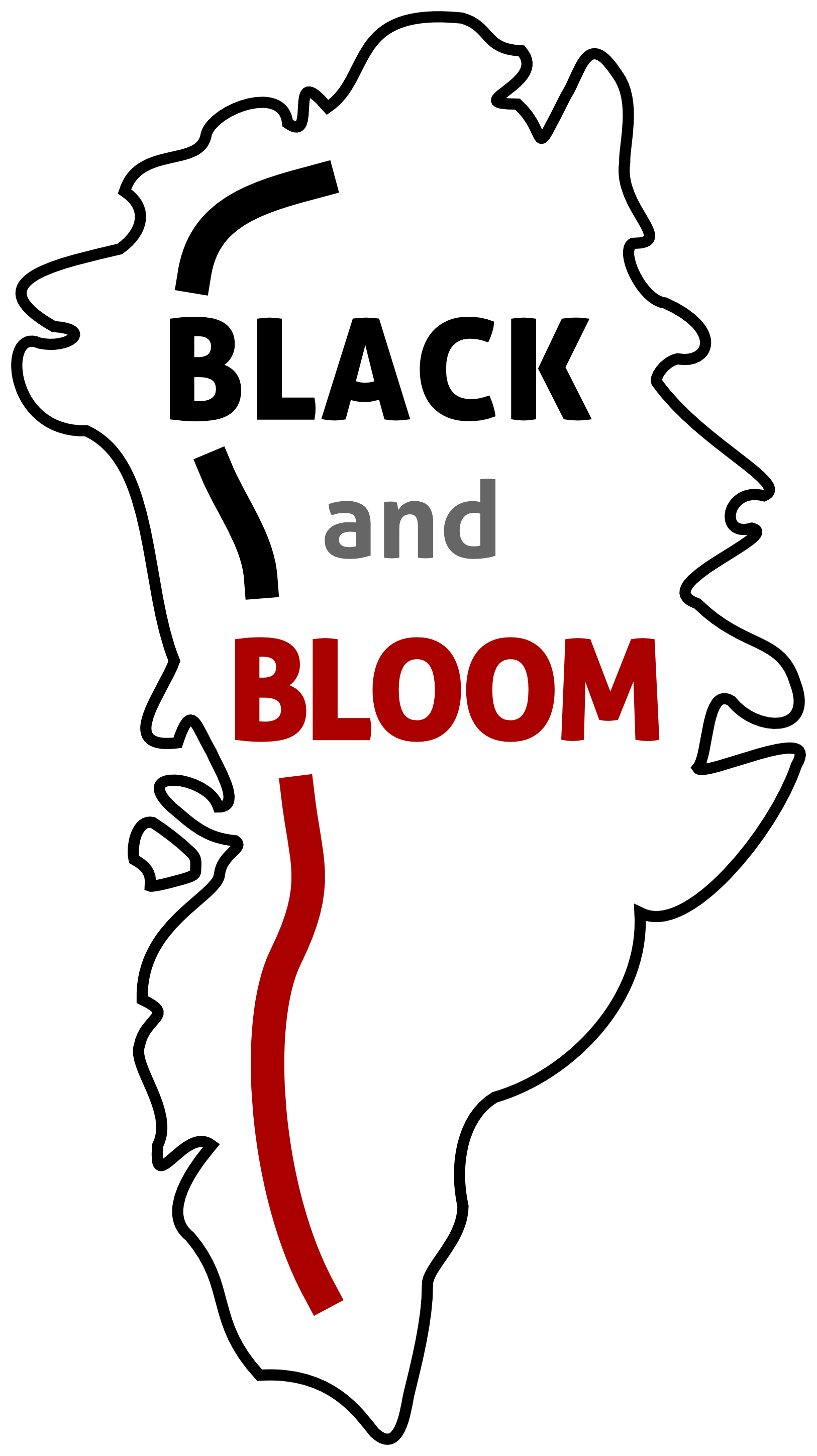Meet our team of scientists…
.
The Black and Bloom team is made up of scientists from several UK universities, as well as numerous international collaborators. See below to find out who is leading Black and Bloom, the scientists running our various working packages (microbiology, particulates, albedo and modelling), and our invaluable advisers and collaborators.
 Black and Bloom Principal Investigator – Professor Martyn Tranter
Black and Bloom Principal Investigator – Professor Martyn Tranter
@MartynTranter1 http://www.bristol.ac.uk/geography/people/martyn-tranter/overview.html, ORCHID ID: 0000-0003-2071-3094
I have the pleasure, rather than the responsibility, of being the leader of Black and Bloom. All my scientific Christmases have come at once with this project. We have a great team of established academics, four exceptionally talented post docs, and an expanding group of, currently three, bright, able and motivated post grads. Our international project partners are eminent in their fields, and very generous with their help and support. What is there not to like about fronting up for this group of researchers?
Black and Bloom will undertake transformative work on the combination of physical, chemical and biological factors that control the albedo of the Greenland Ice Sheet. My contribution to the project science will be to help define the geochemical and biogeochemical factors which impact of the growth of pigmented microorganisms in the snow and ice. I have a long standing interest in the rock-water-microbe interactions, a spectrum of which will be occurring in the different microbiological niches on the surface of the ice sheet. I am particularly interested in how the microbes acquire and recycle nutrient from atmospheric and snow/ice sources. This is likely to be one of the key drivers, following the presence of liquid water, of microbial growth and pigmentation.
I am a very proud Welshman. My interests include rugby (Wales, Ebbw Vale and Bath), the mighty Wolves, Mets and Fins, music, poor photography, cooking, bird watching, bridge, allotmenteering, red wine and real ale.
Black and Bloom’s Microbiologists
 Professor Alex Anesio – Package Leader
Professor Alex Anesio – Package Leader
[email protected]
Alex is Professor of Biogeochemistry in the Bristol Glaciology Centre at the University of Bristol. He gained his PhD in Limnology from Lund University, Sweden in 2000. His research combines molecular and biogeochemical approaches to determine microbial functionality and activity in the cryosphere. His previous research demonstrated that microbial activity at the surface of glaciers and ice sheets are responsible for significant carbon and nitrogen fixation with implications for biogeochemical cycles at local and global scales. He is one of the advocates that glaciers and ice sheets are one of the biomes of Earth. He is author in over 65 peer-reviewed papers and has previously secured funding as PI from NERC, The Royal Society, The Leverhulme Trust and The Nuffield Foundation. Recently, he is also the coordinator of an Innovative Training Network, which includes 13 beneficiaries and 15 PhD students (H2020-MSCA-ITN-2015) with funding from the EU for investigating microbial communities and processes in the Arctic.
 Dr Marian Yallop – Package Co-Leader
Dr Marian Yallop – Package Co-Leader
[email protected]
Marian is Senior Lecturer in the Ecosystem Change Group in the School of Biological Sciences, University of Bristol. She specializes in algal and cyanobacterial research spanning a wide range of temperate and polar habitats, both benthic and pelagic in marine, freshwater and estuarine ecosystems. She has been involved in a number of large projects focusing on quantifying the drivers of ecosystem structure and function at the microbial level. Marian’s research recently highlighted the formation and potential impact of surface blooms of algae on the Greenland Ice Sheet. Currently, she is a Leverhulme Senior Research Fellow. Marian will supervise the algal oriented microbiological research activities of Black and Bloom.
 Dr Chris Williamson – Post-Doctoral Research Associate
Dr Chris Williamson – Post-Doctoral Research Associate
[email protected]
Chris is a Post-Doctoral Research Associate working across the schools of Biological and Geographical Sciences at the University of Bristol. He gained his PhD from Cardiff University and The Natural History Museum, London, in 2015. Chris’ research experience is in the biology of algae, specializing in the synergy between algae (macro and micro) and both natural and anthropogenic change. Current research includes i) genomic approaches to algae and microbiomes, ii) algae in a time of rapid environmental change, iii) photophysiology of macro and micro algae, iv) algal calcification and skeletal mineralogy, and v) taxonomy, phylogenetics and conservation of algae. Chris will head-up the microbiological activities of Black and Bloom, applying his skills in algal ecophysiology and photophysiology research to provide new insight into the influence of ice algae on ice sheet processes.
 Ewa Poniecka (Sypianska) – PhD Student
Ewa Poniecka (Sypianska) – PhD Student
[email protected]
Ewa is a PhD student working on Working Package 1 of Black and Bloom, and is a total science nerd. She’s keen on extreme environments and life forms which are able to survive in such harsh conditions. Her scientific adventure started at the University of Warsaw (Poland), where she did a double degree in Geology and Biotechnology. For her masters in geology, Ewa worked on bacteria living in fracturing fluid, and also spent 1 year in the lovely state of Virginia, working as a research assistant at the University of Virginia. Currently, Ewa is working towards her PhD at Cardiff University (Wales, UK), studying the microorganisms living on Arctic and Antartic glaciers. Ewa believes it is essential to understand extreme ecosystems and their processes in the face of climate change. She hopes that her research will play a vital role in drawing attention and protecting polar environments.
“Somewhere, something incredible is waiting to be known.” – Carl Sagan
Alex Holland – PhD student of the MicroArctic Innovative Training Network 
[email protected]
Alex is a PhD student of the MicroArctic Innovative Training Network (European Commission’s Marie Sklowdowska Curie Actions program, project 675546) based at the University of Bristol within the School of Geographical Sciences. She obtained her bachelors in Geology from the University of South Carolina where she studied the organic geochemical variability of different types of supraglacial impurities on two Alaskan glaciers. For her PhD, Alex is investigating nutrient cycling within supraglacial habitats throughout the arctic. Specifically, she is interested in the sources and sinks of inorganic and organic nutrient stocks, and how these interact with supraglacial microbial communities to determine the overall nutrient landscape of surface ice and the implications for down-stream ecosystems. Alex will join the Black and Bloom team during field work on the Greenland Ice Sheet in addition to her other MicroArctic field sampling campaigns.
Miranda Nicholes – PhD student
[email protected]
Miranda is a PhD student working on the Black and Bloom project at the University of Bristol. During her undergraduate degree in Geography at the University of Bristol, she focused her dissertation research on the microbiology of cryoconite holes. She investigated whether the presence of different dominant minerals affected the type of microbial community which developed within cryoconite holes. For her Master’s dissertation, she then focused on the release of dissolved organic carbon resulting from the viral lysis of bacteria cells. These two projects caused her to catch the glaciology bug (excuse the pun!) and she was thrilled to be accepted onto the Black and Bloom Project. Within the project, Miranda will be assessing the bacterial assemblages present within Greenland Ice Sheet surface ice, and how these interact with ice algal communities and nutrient stocks to influence supraglacial dynamics.
Black and Bloom’s Particulate Experts
Professor Liane G. Benning – Package Leader
[email protected] [email protected]e @lianegbenning lianegbenning.wordpress.com
I am extremely proud to be part of this exciting project. Together we will tackle one of the fundamental problems affecting our extremely fast changing planet – the melting of the Arctic. We have an impressive combination of skills on the team and I look forward not just to the field work but also to the results from the lab work.
I am based both at the Cohen Laboratories in the School of Earth and Environment at the University of Leeds where part of this NERC grant is hosted, but am also building a new interface-geochemistry group at the German Research Centre for Geosciences, GFZ in Potsdam, Germany.
In my group we study various molecular level microbe-mineral-fluid interactions. Further info can be found here here. With respect to the Arctic, where I have worked since 2003, we focus on evaluating mineral transformations in iceberg and glacial meltwaters to quantify the global element cycle. My current focus is on bio-geo weathering and microbial succession in glacial forefields, bio-colonisation of snow and ice, the genomic makeup of algae on snow and ice, and the effects that algae have on albedo,. For Black and Bloom, the Leeds and GFZ teams will focus on aerosol inputs, microbe-particulate interactions and various ‘omics’ of the microbial communities on the Greenland Ice Sheet. Besides the NERC funding for Black and Bloom and Arctic Soils I also co-lead or am part of 3 large EU Training Networks on microbe-mineral-fluid interface reactions (CO2-react, Micro—Arctic and MetalAid).
 Dr Jim McQuaid – Package Co-Leader
Dr Jim McQuaid – Package Co-Leader
[email protected] @jimmcquaid jimmcquaid.wordpress.com
Jim is an Associate Professor in the School of Earth and Environment at Leeds University, who specializes in atmospheric chemical measurements. His research is focused on airborne quantifications of aerosol compositions using Volatility Instrument (VACC) and Low Turbulence Inlet (LTI) filter samplers. He has participated in many airborne campaigns (e.g., Fennec, VOCALS, and ACCACIA) and is currently funded by NERC for detailed aerosol measurements in SAMBBA and ICE-ACCACIA. In September 2013, Jim flew across the US in an airship for the BBC series CloudLab, measuring aerosols & providing technical advice. He will lead the aerosol sampling and real-time analysis activities of Black and Bloom.

Dr. Jenine McCutcheon – Post-Doctoral Research Associate
[email protected]
Jenine McCutcheon is a postdoctoral research associate in the School of Earth and Environment at the University of Leeds. She completed her PhD at The University of Queensland (Australia) in 2017. Jenine specializes in Geomicrobiology and uses a variety of microscopic and spectroscopic techniques to study microbe-mineral interactions. Her role in the project is to characterize black carbon (soot) and mineral dust being deposited on the ice surface from the atmosphere, and understand how this particulate matter interacts with algal communities growing on the Greenland Ice Sheet.
 Dr Stefanie Lutz
Dr Stefanie Lutz
[email protected]
Steffi is a Post-Doctoral Research Associate at the GFZ German Research Centre for Geosciences in Potsdam. She is a molecular microbial ecologist with the focus on microbial communities associated with glaciers and ice sheets. As part of the Black & Bloom project she will be looking at the diversity and function of algal communities using ‘omics’ techniques.
Black and Bloom’s Albedo Experts
 Professor Andy Hodson – Package Leader
Professor Andy Hodson – Package Leader
[email protected]
Andy is Professor in Cold Regions Biogeochemistry at the University of Sheffleid and in Arctic Geology at the University Centre on Svalbard. He has a quarter of a century of field-based research experience in the Arctic, leading NERC, EU and Leverhulme-Trust-funded projects in Svalbard, Greenland and northern Sweden. He has also conducted several major field seasons in Antarctica (Signy Island twice; Rothera, King George VI Ice Shelf, South Georgia, the South Shetland Islands and the Vestfold Hills), funded by the same sponsors. He has developed novel approaches to glacial biogeochemistry that include the first use of uninhabited aerial vehicles for debris mapping on Arctic glaciers and the development of techniques for tracking microbial production in icy habitats.
 Professor Edward Hanna – Package Co-Leader
Professor Edward Hanna – Package Co-Leader
[email protected]
Edward is a Professor in Climate Change at the University of Sheffleid. He is a climatologist with extensive experience of modelling the Greenland Ice Sheet surface mass balance and climatic drivers. He served as Co-chair of ISMASS (Ice Sheet Mass Balance and Sea Level Expert Group of the Scientific Committee on Antarctic Research/International Arctic Science Committee/World Climate Research Programme’s Climate & Cryosphere project) and is currently on its Steering Committee. Edward is an Editor of THE CRYOSPHERE, and is on the US-CLIVAR Greenland Ice Sheet-Ocean Interactions (GRISO) Advisory Committee. He has contributed as a lead or co-author to several Arctic Report Cards (2007, 2009, 2011, 2013 & 2014) of the National Oceanographic & Atmospheric Administration, and is a Contributing Author on the Fifth Assessment Report (2013) of the Intergovernmental Panel on Climate Change. More recently Edward has developed the concept of the Greenland Blocking Index related to North Atlantic polar jet stream changes, as a key driver of the recently increased Greenland icemelt.
 Dr Tristram Irvine-Fynn – Package Co-Leader
Dr Tristram Irvine-Fynn – Package Co-Leader
[email protected]
Tristram is a Lecturer in Glaciology at Aberystwyth University, having completed a Canadian research Masters, a PhD at the University of Sheffield, and 3 short post-doc positions. His research interests include process glaciology and glacier hydrology, and he has over 14 years of field-based research experience, primarily in the Arctic but including Greenland, the Himalaya and Southern Alps. His current research focus is on novel techniques to monitor supraglacial characteristics, particularly near-surface ice hydraulics, development of ice surface roughness and albedo. His skill sets include competence in standard hydrometeorological techniques, ground penetrating radar (GPR), GIS, image analysis and, increasingly, tools for microbiological investigations (e.g. flow cytometry).
 Dr Joseph Cook – Post-Doctoral Research Associate
Dr Joseph Cook – Post-Doctoral Research Associate
[email protected], @tothepoles, http://tothepoles.wordpress.com, ORCHID ID: 0000-0002-9270-363X
Joseph is responsible for measuring and modelling the spectral reflectance and albedo of the ice sheet surface as it evolves over melt seasons. This is important because the reflectivity of the ice determines how much solar energy is absorbed and used to melt ice. As ice melts, water can accumulate in spaces between ice crystals and impurities gather on the ice surface, causing the reflectivity of the ice to decrease. At the same time, algal growth adds dark matter to the ice and also exacerbates water and impurity accumulation. Joseph’s field measurements and radiative transfer modelling will quantify these processes and advance our understanding of the role of microbes in the melting of ice sheets.
Joseph has been studying the interactions between biology and ice surface albedo since 2008, primarily focusing upon cryoconite (biologically engineered granules that provide habitats for remarkably diverse ecosystems on ice surfaces). His recent work has shown how cryoconite sculpts ice into comfortable habitats for microbial activity by exploiting their own low albedo. Previous projects have taken him into the field in Greenland, Iceland and Svalbard.
Black and Bloom’s Remote Sensors and Modellers
 Professor Jonathan Bamber – Package Leader
Professor Jonathan Bamber – Package Leader
[email protected]
Jonathan is Professor of Cryospheric Remote Sensing at the University of Bristol. He has >25 years of experience in the analysis of satellite, airborne and model data sets from the polar regions, specialising in the use of these to study ice dynamics and mass balance of the ice sheets. In the last five years he has concentrated on the integration of these observations into Earth System models. Jonathan will lead Working Package 4 of Black and Bloom.
 Dr Andrew Tedstone – Post-Doctoral Research Associate
Dr Andrew Tedstone – Post-Doctoral Research Associate
[email protected] http://atedstone.github.io
Andrew is a physical glaciologist with interests in the processes determining the mass balance of the Greenland Ice Sheet. He completed his PhD in 2015 at the University of Edinburgh. Andrew’s research examines changes in surface albedo, the interaction between surface meltwater production and ice dynamics, and variability in proglacial runoff.
Black and Bloom’s Advisers and Collaborators
 Professor Jason Box
Professor Jason Box
[email protected]
Jason is Professor at the Geological Survey of Denmark and Greenland (GEUS) and leader of the darksnow project. He has been investigating Greenland ice sheet sensitivity to weather and climate as part of 23 expeditions to Greenland since 1994. His time camping on the inland ice exceeds 1 year. The year 2012 brought a deeper level of insight as the scientific perspective shifted to examine the interactions ice with atmospheric and ocean systems, including the role of fire in darkening the cryosphere. As part of his academic enterprise, Jason has authored or co-authored 50+ peer-reviewed publications related to Greenland cryosphere-climate interactions and instructed climatology courses at The Ohio State University 2003-2012. Jason was also a contributing author to the Nobel Peace Prize-winning Intergovernmental Panel on Climate Change 2007 4th assessment report and is the former Chair of the Cryosphere Focus Group of the American Geophysical Union.
 Dr Marek Stibal
Dr Marek Stibal
[email protected]
Marek is a scientist in the Department of Geochemistry at the Geological Survey of Denmark and Greenland. He examines the microbial ecology and biogeochemistry of icy ecosystems, with an emphasis on large scale effects of microbial activity on glacial systems, carbon and nutrient cycling in the cryosphere, and microbial diversity, distribution and dispersal in Arctic and Antarctic terrestrial environments. He has been working on Arctic glaciers, including the Greenland Ice Sheet, since 2002, and is a member of the darksnow project.
